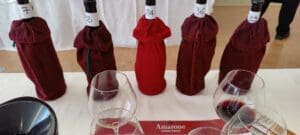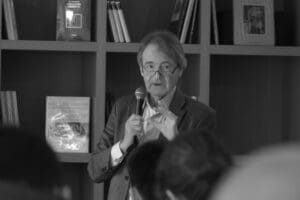What do you see in a wine before you decide it is well-made? That is a million dollar question. Finding gem among stones is a challenge. If our expectation is to meet every bottle from a region tasting similar, then we are seeking conformity and not character. But of course some regions are just so damn good at being conformist.
Marlborough started with little attention until 1986, when Cloudy Bay Sauvignon blanc, by Kevin Judd, propelled the region into international stardom. The Marlborough today, still renown for its distinctive Sauvignon blanc and Pinot noir, is recognised as a class of its own. But what can be troubling is their homogeneous trait. Vibrant red fruit Pinot and pungent citrus Sauvignon are tell-tale signs of almost every Marlborough wines, most of these wines are linear.
After Cloudy Bay became part of the luxury brand, LVMH, Kevin Judd dived into another wine venture. As a Marlborough white, his Greywacke Wild Sauvignon 2010 was atypical with scent of leafy blackcurrant, like a blackcurrant flavoured Ricola. It took a considerable amount of time before the signature style of Marlborough showed through. By then the unusual note would have captivated most to its speciality.
Then there are wine makers who differ not by style, but texture. Imagine a mouth puckering white wine with texture and weight. Deep shade of orange yet no hint of oxidation. How could that be possible? Yes, the process of maceration or grape skin-contact. An unusual approach for white wine making, but Josko Gravner decided it was natural to blend Chardonnay, Sauvignon blanc, Pinot grigio and Riesling Italico with their skins inside a clay amphorae.
While everyone started giving disapproving glances on the orange colour 2005 Breg Gravner Anfora, the perfume nose of flowers and dried apricots dismissed their doubts. Giving a subtle weight at 13 per cent alcohol, the tea-like tannins and lightly tart acidity from white wine was odd, but slowly grew on us. You can tell people are impressed when they volunteered to finish the wine. This was the result after seven months of natural yeast vinification without temperature control, filtration or clarification.
Indeed I am singing praises of unusual wines but beating the conformist game is not for everyone. Most dropped from the game and disappeared under the dust of yesterday. Josko did not achieve quick success with Breg until wine geeks took notice of it. Ultimately what drives wine making is how receptive consumers are. Inspiration doesn’t come cheap, and regular indifferent produce is often the easy way out.
What makes wine exciting is the possibility of experiencing a bottle with unique attributes, one with different expression from its neighbour across the street or right beside. However, be it the lack of confidence in some wine makers, or score influence from certain big time wine critique, most wines are bottled in the absence of individuality.
Of course, one can continue to drink regular uninspiring wines. Just don’t complain, because you chose to be a conformist.



